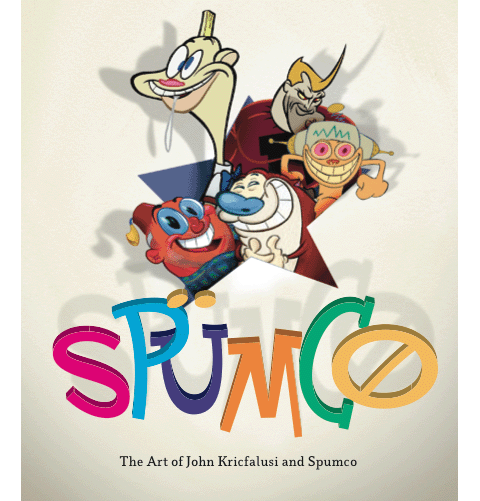
RISD (The Rhode Island School of Art and Design) is hosting an art show—now open and running until January 9, 2015—“What Nerve!” and it spotlights alternative artists, several of them with one foot in cartooning:
What Nerve! Alternative Figures in American Art, 1960 to the Present proposes an alternate history of figurative painting, sculpture, and vernacular image-making from 1960 to the present that has been largely overlooked and undervalued. At the heart of What Nerve! are four mini-exhibitions based on crucial shows, spaces, and groups in Chicago (the Hairy Who), San Francisco (Funk), Ann Arbor (Destroy All Monsters), and Providence (Forcefield)—places outside the artistic focal point of New York. These moments are linked together by six influential or intersecting artists: H. C. Westermann, Jack Kirby, William Copley, Christina Ramberg, Gary Panter, and Elizabeth Murray.
All of these artists ran against the modernist grain and its emphasis on theory. Rather than distancing their art through irony or institutional critique, the artists in What Nerve! seized imagery and ideas from vernacular sources as diverse as comics and pottery, pulling and reshaping material from their environments to tackle a variety of subjects with equal doses of satire and sincerity. What Nerve! looks at their distinctive idioms, shown in works that are often earnest, sometimes narrative, frequently transgressive, and always individualistic.
The show is curated by Dan Nadel, who has been spending his time profitably since PictureBox folded.

Nadel has also put together the catalog for the show, What Nerve! , which spotlights all of the above with essays by Nicole Rudick, Roger Brown and more. I WANT THIS BOOK.
The RISD exhibit will have some events as well:
Design the Night opening celebration
Thursday, September 18, 2014 | 5-9 pm | free
Critical Encounters with Body, Place, and Time
Friday, September 19, 2014 | 1-4 pm | free
Gallery conversations with artists, curators, and art historians explore key issues emerging from What Nerve!
Screenings: Hairy Who & The Chicago Imagists
Sundays, September 21 and October 12, 2014 | 2-4 pm | free
Art top: Karl Wirsum’s “Show Girl I” (1969)

I occasionally receive emails asking something along the lines of, “Whatever happened to that John Kricfalusi/Spumco coffeetable book you were working on?” Recently, however, I’ve noticed that there have been some unflattering rumors about my involvement. That’s why I feel it’s time to set the record straight about what happened to the project. I should point out that this is a personal story written from my perspective, and you may get different versions from the other key players involved. My story, however, comes from first-hand involvement in the project and direct conversations with all the main players. To the best of my knowledge, it’s an accurate account of what happened.
I was asked in 2008 by PictureBox to work with John Kricfalusi and serve as the editor for a book celebrating his work and that of the studio he co-founded, Spumco. The publisher Dan Nadel assured me that, “You and John will have complete control over how the book is marketed, packaged, and presented. You know the audience and I know you, so that’s good enough for me.”
I worked closely with John throughout 2009 on the manuscript. I didn’t write a single word of the book, but came up with the book structure and molded the manuscript into shape. For those who aren’t aware, John is a terrific writer. I didn’t have to do much other than nudge him in the right direction. We ended up with an entertaining, educational and fun manuscript that I look at with pride, filled with new information even for those who think they already know all there is to know about the history of Spumco and John Kricfalusi.
During the time I worked on the book, PictureBox ran into financial problems. The reason Dan told me was due to disappointing sales of a huge two-volume coffeetable book about Gary Panter. As a result, Dan sold the John Kricfalusi book to Abrams ComicArts, a fantastic imprint started by the able Charles Kochman, who is now the executive editor of Abrams. PictureBox remained the book packager, and fundamentally, nothing changed in the production process, except that we gained a bigger publisher with deeper resources.
I was heavily involved on the visual side as well, and sequenced some early versions of the book. Unfortunately, the book began to unravel once it was handed off to the designer Norman Hathaway. It was almost immediately clear that he was a poor match for the book and didn’t understand John’s artwork or the presentation it needed. Dan, however, insisted on keeping Norman onboard because they were personal friends.
I was happy to end my duties on the book because I could see the whole project going south. On February 27, 2010, I sent an email to Norman where I expressed concerns that he was harming the book. In it, I wrote:
After multiple meetings about design and your phone discussions with John, I was all but certain that we’d arrived at some sort of a consensus of what John wants the book to look like. John admittedly hasn’t been clear about certain aspects of the design, but he’s been adamant about one issue: the use of white space. Your layout seems to purposely defy him on this essential point which, regardless of its importance to you, is a make-or-break issue for him. There is tons of wasted white space and columns that are filled with nothing or with a tiny piece of art. This process will not go smoothly unless you build and improve upon John’s ideas. John is asking for excitement for the eyes, a “visual blowjob” in his terminology. This current approach is tame, respectful, and completely at odds with wha





